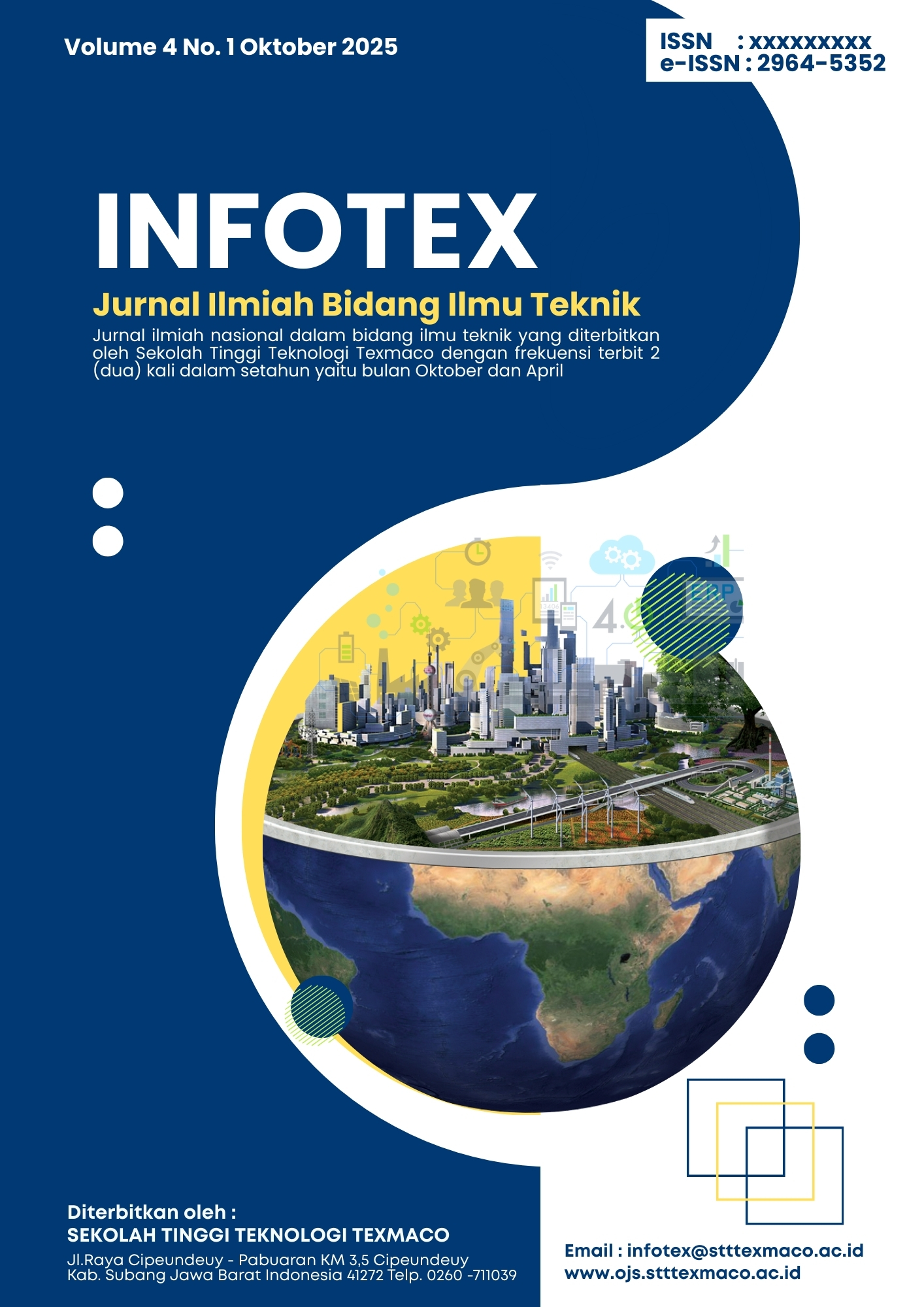Analisis Perbaikan Kualitas Produk Outsole Sepatu Safety Menggunakan Metode PDCA di PT. XYZ
Keywords:
defects, product quality, outsole, safety shoes, QCAbstract
This research analyzes the improvement of safety shoe outsole products using the PDCA method at PT. XYZ, aiming to identify defect causes and enhance product quality. In the initial stage, problem identification was carried out by collecting defect data, showing a dominant defect of 43% due to cracking, caused by human, method, material, and machine factors. In the Plan stage, Pareto diagrams, control charts, and Fishbone diagrams were used to identify the root causes of defects. In the Do stage, improvements were made through operator training, standardization of press machine temperature and pressure, and enhanced quality control. The Check stage showed a reduction in defects from 3.21% to 2.04%. In the Action stage, standard operating procedures, continuous training, and monitoring by the QC team were implemented to ensure sustained improvement. Suggested improvements include regular operator training, periodic machine calibration, raw material evaluation, and improved QC documentation and reporting. The research concludes that the PDCA method effectively identifies the root causes of defects, reduces defect rates, and improves the quality of safety shoe outsoles at PT. XYZ.
References
[1] Sihombing, M. I. S., & Sumartini, S. (2019). Pengaruh Pengendalian Kualitas Bahan Baku dan Pengendalian Kualitas Proses Produksi terhadap Kuantitas Produk Cacat dan Dampaknya pada Biaya Kualitas (Cost of Quality). Jurnal Ilmu Manajemen Dan Bisnis, 8(2), 42. https://doi.org/10.17509/jimb.v8i2.12665
[2] Yolanda Amarta, Y., & Hazimah. (2020). Pengendalian Kualitas Produk Dengan Menggunakaan Statistical Processing Control (SPC) Pada PT Surya Teknologi. Jurnal Teknik Industri Universitas Putra Batam, 1(1), 1–11.
[3] Bastuti, S., Surya Kencana No, J., & Selatan, T. (2020). Analisis Kegagalan Pada Seksi Marking Untuk Menurunkan Klaim Internal Dengan Mengaplikasikan Metode Plan±Do±Check±Action (Pdca). Jurnal Mesin Teknologi , 11(2), 113–122.
[4] Martha Sinawangresmi Setiasih, Wullur, M., & Sumarauw, J. S. B. (2023). Analisis Proses Produksi di CV. Anugerah Persada Teknik, Di Sepanjang Jawa Timur. Jurnal EMBA : Jurnal Riset Ekonomi, Manajemen, Bisnis Dan Akuntansi, 11(1), 12–22. https://doi.org/10.35794/emba.v11i1.45642
[5] Ariani, D. W. (2016). Modul Konsep Kualitas. Pustaka Universitas Terbuka, 1–23.
[6] Azhari, A., Hairudinor, H., & Rahmawati, E. (2020). Pengaruh Kualitas Produk, Kualitas Layanan Dan Harga Terhadap Kepuasan Pelanggan Vinila Textile Dan Accessories. Jurnal Bisnis Dan Pembangunan, 9(1), 36–51.
[7] Malabay. (2016). Pemanfaatan Diagram Fishbone untuk Mendukung Kebutuhan Proses Bisnis. Jurnal Ilmu Komputer, 1(2), 150–154.
[8] Listyani, I., Sipil, J. T., Teknik, F., & Surabaya, U. N. (2020). PENGENDALIAN KUALITAS PRODUK CAT DENGAN MENGGUNAKAN METODE STATISTICAL PROCESS CONTROL ( SPC ) Mas Suryanto HS Abstrak. Jurnal Unesa, 1–11.
[9] Yolanda Amarta, Y., & Hazimah. (2020). Pengendalian Kualitas Produk Dengan Menggunakaan Statistical Processing Control (SPC) Pada PT Surya Teknologi. Jurnal Teknik Industri Universitas Putra Batam, 1(1), 1–11.
[10] Yusri Nadia, M. Thaib Hasan, Krisvan Leonardo Hutabarat, & Yusnawati. (2024). Determination of Production Capacity Time Using the Rough Cut Capacity Planning (RCCP) Method. JURUTERA - Jurnal Umum Teknik Terapan, 11(01), 63–69. https://doi.org/10.55377/jurutera.v11i01.2181
Downloads
Published
How to Cite
Issue
Section
License
Copyright (c) 2025 Raden Mohamad Sugengriadi, Muhamad Mirfak Arfan, Ida Farika

This work is licensed under a Creative Commons Attribution-ShareAlike 4.0 International License.






